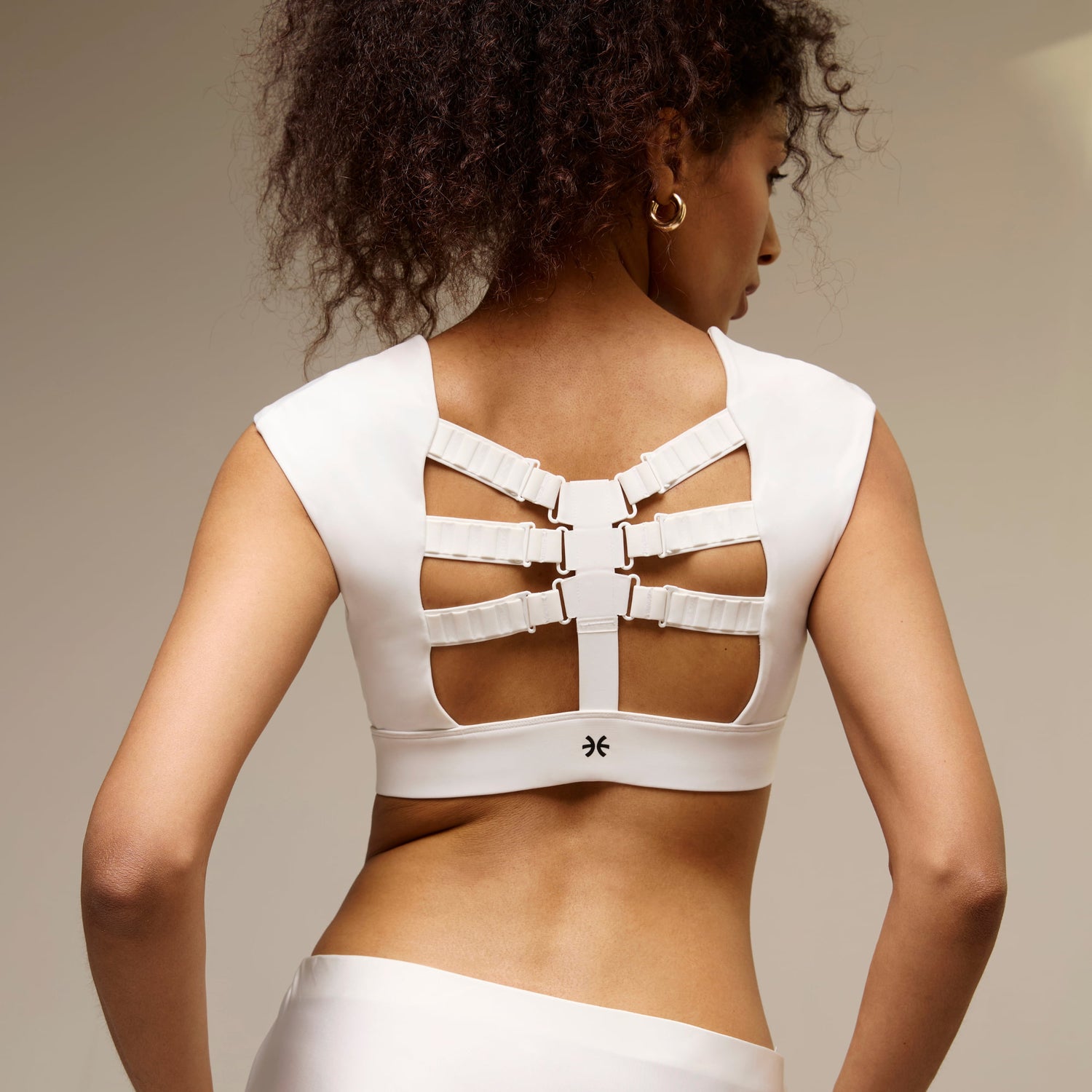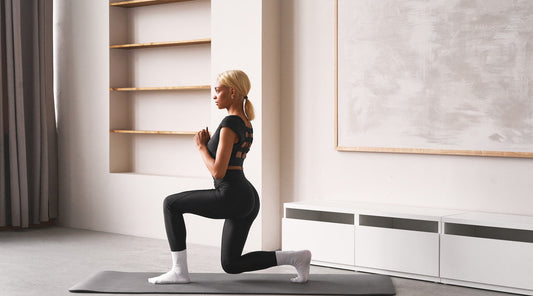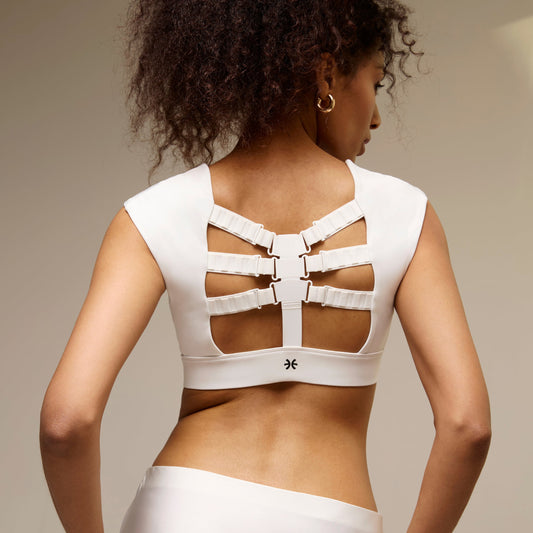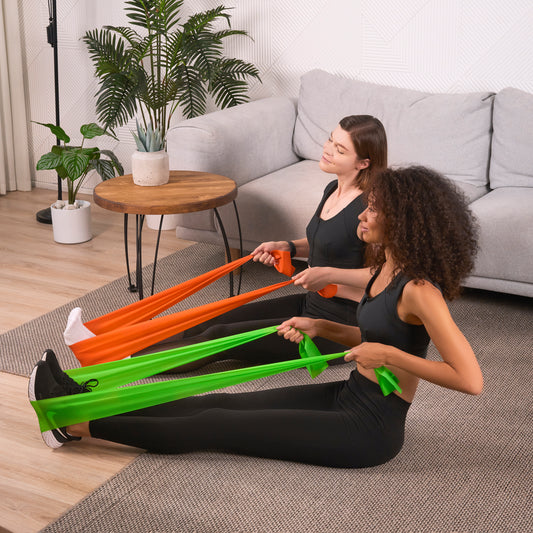Tech neck is a term used to describe the pain and discomfort caused by prolonged use of technology devices such as smartphones, tablets, and laptops. It’s one of the rapidly growing health problems. The condition is caused by the constant forward head tilt and downward gaze required to use these devices, leading to muscle strain and tension in the neck, shoulders, and upper back. Quickly check, how are you sitting right now? According to recent data, the average person spends 3 hours and 15 minutes on their phone each day. And 1 in 5 smartphone users spends upwards of 4.5 hours on average on their phones every day.
Tech Neck Symptoms
How to know that you should be serious about your posture while using a laptop or smartphone? Of course, pain is the most obvious symptom that your neck is out of place, but there are other less obvious symptoms that are signs of misalignment.
Headaches
Headaches may seem unrelated to neck strain. However, if the nerves in your neck get pinched due to strain, it not only causes local pain but can also cause pain at the base of the skull. Oxygen intake might be limited with bad posture which leads to a loss of productivity and focus.
Tingling or numbness in the hands
It’s also a popular symptom of “desk workers” who spend 10-12 hours per day in front of a monitor. The nerve running from the base of your neck to the arms and hands may become damaged. Since nerves control movements and sensations, nerve damage results in numbness, weakness, and tingling in the arms and hands.
Stiffness in the neck and shoulders
Slouching may also cause your shoulders and neck muscles to feel stiff, tense, and immobile. Stiffness caused by tech neck usually gets better with rest, improved posture, and massage therapy.
Temporomandibular joint (TMJ) problems
Pain or dysfunction in the jaw joints and muscles also happens because of uneven shoulders.
Dull ache in the back of the neck
Initially, the ache is mild. However, if you continue to strain your neck, the pain increases in intensity. You may experience relief when lying down or when taking a break from work or staring at screens.

Consequences of Tech Neck Posture
The problem with tech neck can easily become a chronic condition if left untreated. The constant forward head tilt and downward gaze can lead to poor posture, which can cause muscle imbalances and even lead to more serious conditions such as herniated discs and spinal degeneration. The scientific name of our neck is the cervical spine, it’s the most movable and flexible part of the spine. It has a natural lordotic curvature, which means it bends inward at the neck gently. It helps even out the backward or kyphotic curve of your thoracic spine and helps balance the weight of your head evenly.
Like many flexible and complicated things, our cervical spine is also more vulnerable to pain and damage. When you bend your neck forward so you can look at your smartphone or another electronic device, it places a huge weight of strain on your spine and causes a lot of tension to your neck and shoulders and upper back pain. When you look straight ahead, the weight of your head is between 10 and 12 pounds. Even if you only bend your neck forward 15 degrees to look at your phone, it doubles the weight of your head, making your head weigh around 27 pounds. Imagine bending your neck at 45 degrees — that’s almost 50 pounds of weight your neck muscles, upper back and shoulders are supporting. Your muscles need to work harder to support a heavier head, and this will cause neck pain.

How to Prevent Tech Neck
It doesn’t sound realistic to stop using devices. But with some wellness practice and exercises, you can reduce the risks of tech neck consequences.
Take regular breaks
It is important to take regular breaks from technology devices to give your neck and shoulders a chance to relax and recover. Set a timer to remind yourself to take a break every 30 minutes to an hour. Even if it’s just for a minute, at least stand up and start walking around to get your blood circulating and position your neck differently. Doing this doesn’t only benefit your neck, but it’s also good for your whole body.
Practice good posture
Good posture is essential to preventing tech neck. Make sure that your shoulders are back, your chest is open, and your head is in a neutral position. This will help to reduce the strain on your neck and shoulders. The Etalon posture correcting bra can help you to maintain good posture while you work or use devices.
Adjust your device
Make sure that your device is at the right height and angle to prevent the need for excessive forward head tilt and downward gaze. To avoid bending your neck down or sloping your head forward, hold your phone close to eye level. If holding the screen higher causes your arms to become tired, buy a holder that elevates your device or prop your arms up comfortably by resting your elbows on a tabletop. If you’re working on a laptop, buy another monitor and adjust its height.
Choose a chair with a headrest or a standing desk
Your chair’s ergonomics can help you keep proper posture and prevent tech neck. Buy a chair with a headrest so you can hold the back of your head up against the headrest as you use your computer. When you hold your head in this position, it prevents you from flexing your neck forward to look down.
Massage
Massaging the affected area can be an effective way to reduce tension and improve circulation, thus reducing pain and discomfort.
Look forward
Instead of tilting your chin down so you can read your phone or tablet, raise it to eye level. Do the same with your computer’s monitor. It should also be at eye level, so you’re not perpetually dropping your head and causing muscle strain.
Use voice features
Voice to text is another way you can reduce the amount of time you spend looking down and texting.

Exercise Routine
Aerobic and stretching activities can prevent tech neck symptoms. Jogging, walking, swimming, elliptical trainer, or stationary bike are great. During the work breaks you can:
Chin tucks
Start standing or sitting with your spine straight. Draw your head straight back like you're making a double-chin. In this position you offset the effects of constantly thrusting your head forward. Make sure not to tilt your head back when doing this, he advises; keep your chin tucked in, but still parallel to the floor. Hold for five seconds, release. Then repeat.
Hand to ear stretch
Place your right hand flat against the right side of your head. Try to tilt your head to your right shoulder while pushing against your hand. Hold for five seconds, release slowly, and repeat on the other side.
Hands to forehead stretch
Place both hands on your forehead, and while keeping your chin parallel to the floor, try to push your head forward while also pushing your head back with your hands. Hold for five seconds, and repeat.
Cobra pose
Start lying down on the floor on your belly with your head looking down. Lift your head and upper chest off the ground with only minimal support from your hands. Hold for 15 to 30 seconds. It stretches the back and neck in the opposite position to the one that causes “tech neck,” therefore helping counter the imbalance.
Super(wo)man exercise
Lie on your stomach and alternately raise your right arm and left leg, then left arm and right leg, off the ground. Hold for a second or two, lower, and repeat.
Roll your shoulders back
Throughout the work day, roll your shoulders up and back as you shift your head back. This keeps muscles moving and repositions your body in a healthful way.
If you experience persistent pain or discomfort, it is important to consult a healthcare professional to rule out any underlying conditions that may need to be treated.
Find more exercises for a healthy posture, check out our guide: 9 Exercises to Improve Your Posture.
Sources
https://spineina.com/blog/all-about-tech-neck/
https://www.everydayhealth.com/wellness/how-to-beat-tech-neck-and-why-its-so-bad-for-your-health/
https://www.premierspineinstitute.com/blog/4-signs-you-may-have-tech-neck
https://utswmed.org/medblog/tech-neck-pain-treatments/
https://explodingtopics.com/blog/smartphone-usage-stats
Photos by Wengang Zhai, Kev Costello and Chalo Garcia on Unsplash
FAQs
What is tech neck?
What are the common symptoms of tech neck?
Can tech neck lead to long-term health issues?
How can I prevent tech neck while using devices?
What exercises help relieve or prevent tech neck?
Does massage help with tech neck?
When should I see a doctor about tech neck?
Trending
Try Etalon posture improvement products









